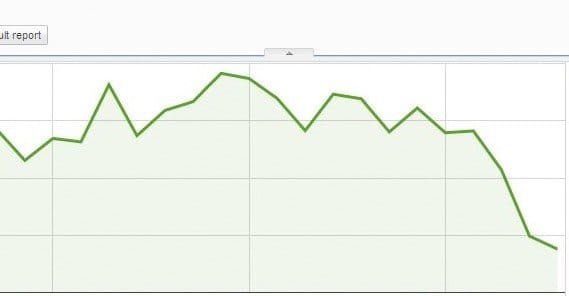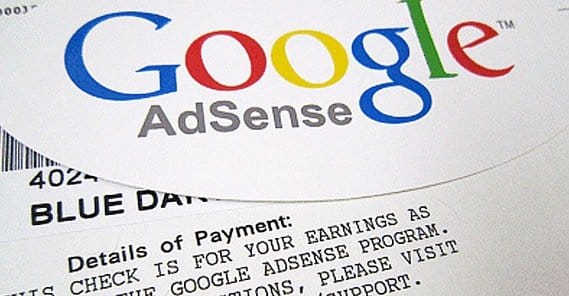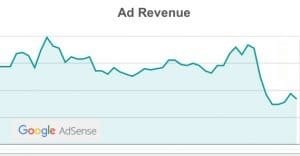How to Reverse Google Smart Pricing to Increase Earnings

If you’re an online marketer and you haven’t encountered Google’s AdSense Smart Pricing, you’re lucky. If you have, well, bear with me while I explain what it is and why it’s bad to anyone who doesn’t already know.
What is Smart Pricing
From the perspective of an advertiser, Smart Pricing is a feature designed to make sites more appealing.
Advertisers bid on ad positions in auction. The price they bid depends on a number of factors, including traffic quality rating, volume and conversion rates for the site in question. When more than one advertiser is interested, they can one-up each other on bids, which results in the site earning more money on each click.
The way smart pricing works is familiar to any auction shopper. An advertiser decides on the maximum they want to bid. Google then makes the absolute minimum bid for the ad space, based on the business metrics it measures. If another business bids, Google compares the maximum bids and goes with the lowest possible bid with no competition.
For publishers, unfortunately, this often results in lower bids than were previously made. Smart pricing changes from month to month, and if a site performs poorly, the bids drop. This leads to many marketers, particularly those with middle or low quality sites, to find their revenues drop sharply.
Smart Pricing isn’t new. It was introduced by Google all the way back in 2004, and it’d been a thorn in the side of marketers everywhere ever since.
How Smart Pricing Hurts Publishers

Smart pricing can be very detrimental to some marketers. For example:
- Smart pricing tends to reduce the price of your ads, which means advertisers pay less, which means you earn less. The idea is that over time the advertiser will bid more because your traffic is proving itself worthy, but in practice this rarely happens.
- Smart pricing covers your whole AdSense account, not just the one individual site that’s smart-priced. If you have ten blogs, and one of them falls under the threshold to need smart pricing, it will it hurt all of your sites.
- Smart pricing is not flagged as a status you can monitor. You can’t log in and see “Site X has entered Smart Pricing mode.” You simply have to guess based on nebulous and hidden criteria.
Additionally, Smart Pricing is reviewed on a weekly basis. If your site is smart priced on Monday, and you fix it on Tuesday, you won’t see any change until the following Monday. It can, at least, be reversed, and it can also be worked around in the case of multiple sites. Just remove AdSense from the offending site to protect your other sites. You can put it back when you’ve improved the quality of that site.
Avoiding or Fixing Smart Pricing
Upon reading the above, most people would have one initial thought; just make another AdSense account. You can put the smart priced site on that secondary account and work on it, while you maintain your non-smart-priced sites on your primary account.
Don’t do this! The problem here is that you need special approval from Google to have more than one AdSense account, and such approval is incredibly difficult to get. You basically have to have multiple businesses under multiple names with multiple sets of contact information. It’s a difficult situation to maintain and tends to have negative effects on tax preparation, for minimal benefits from AdSense.
The first choice you need to make is whether or not to keep the smart priced site on AdSense. If it’s bringing down the earnings of several other sites, it’s probably a good idea to segment it out. You can run ads for another network until you improve your metrics enough to get back in.
At this point, it’s time to figure out how to fix the issues that led to being smart priced.
There’s a common misconception about smart pricing that it’s dependent on CTR. Your click through rate is important for commerce, but it’s not the be-all and end-all decision making factor. Google even says as much in their overview of smart pricing; CTR doesn’t matter for it.
What does matter, however, is advertiser conversion rate. You don’t just want to send a lot of clicks to the advertiser, you want to send users who will actually convert. The reason this exists is to combat bots and low quality clickfarm traffic. You get paid per click, but the advertiser is only paying on the assumption that the traffic they receive is going to earn them more money than they spend on advertising. Those clicks need to convert, or your site isn’t worth spending money on.
Therefore, to fix the problem, you need to figure out how to increase the conversion rate for your advertisers.
- Refine either your content or your advertising. One of the primary reasons ads don’t see conversions is the lack of consistency between topics. If you have camera manufacturers advertising on your site, you would do well to write about cameras.
- Consider removing some of your ads. One of the common causes of a low conversion rate is just having too many ads on your page. In particular, text link units aren’t very effective for converting users these days. Banners and native ads are much better, particularly when positioned properly.
- If you’ve been buying traffic, take a look at the source and quality of that traffic. It’s possible that you’ve been buying low quality bot traffic, which will earn you money from clicks but will decrease your earnings due to a lack of conversions.
- Be patient with your changes. As I mentioned, it takes a week for Google to review changes you have made and reconsider your smart pricing status. You need better results, you need them to be consistent, and you need patience to let them circulate to the point that they benefit you.
Thankfully, many of the changes you’re making will also benefit your SEO and user experience, so you can expect overall traffic – and thus revenue – to rise on top of getting your old ad pricing back.
 ContentPowered.com
ContentPowered.com





Jens
says:Hi Kenny, thank for your post, very interesting. Nowadays when you do an AdSense A/B-Test for a banner, you get the results for RPM and value named quality factor. Do you know if these quality factor is somehow linked to smart pricing? In my case I test two versions: A = text and image ads B = text ads only RPM for Version A is 20 % higher than for Version B. But quality factor for Version B is 180 % higher that for Verison A. Would you expect a long term improvement on CPC caused by smart pricing when I go with Version B?
thanks alot, now I fully understand why my cpc goes up and down like a mad fellow…